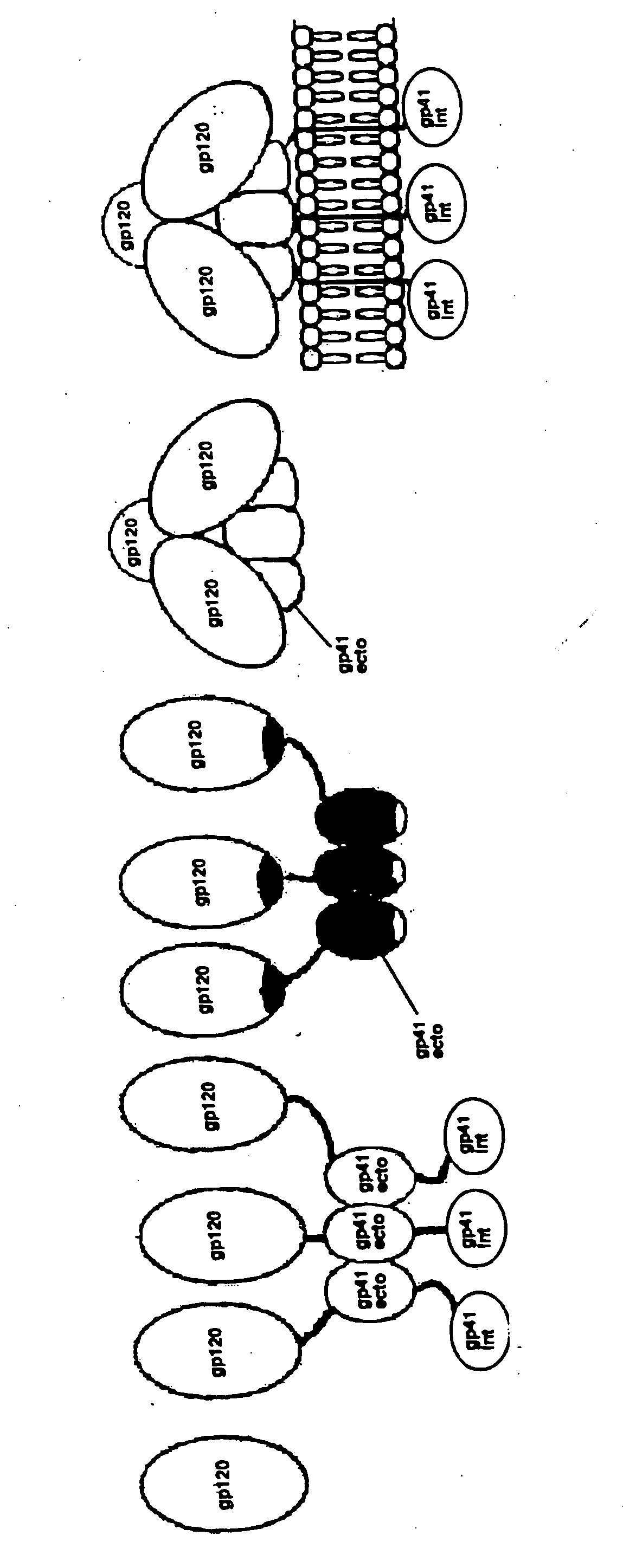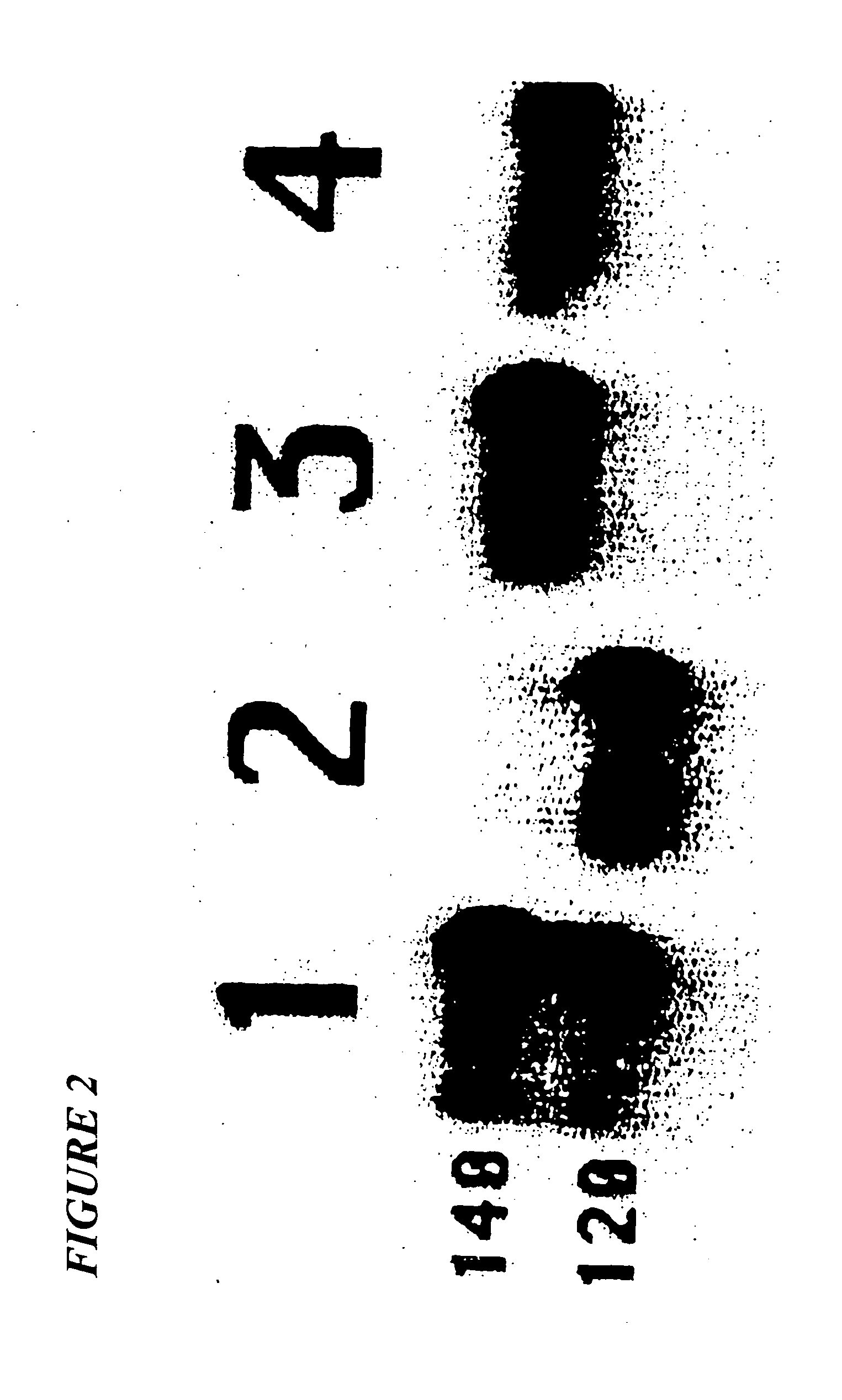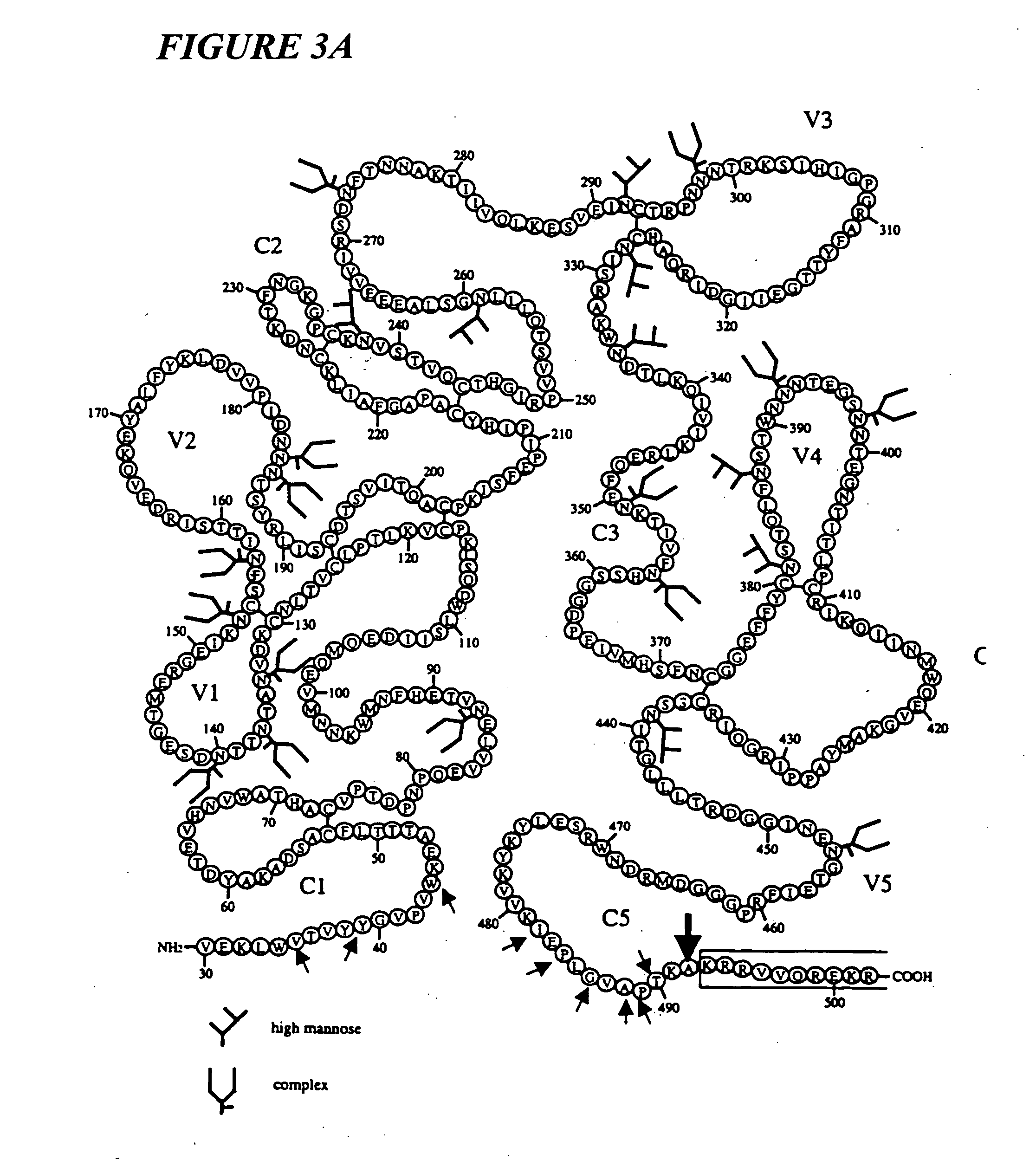Human immunodeficiency virus envelope clycoprotein mutants and uses thereof
- Summary
- Abstract
- Description
- Claims
- Application Information
AI Technical Summary
Benefits of technology
Problems solved by technology
Method used
Image
Examples
Embodiment Construction
[0140] This invention provides a first stable HIV-1 pre-fusion envelope glycoprotein trimeric complex, wherein (i) each monomeric unit of the complex comprises HIV-1 gp120 and HIV-1 gp41, (ii) the gp41 has one or more mutations in its N-terminal helix, and (iii) the gp120 and gp41 are bound to each other by at least one disulfide bond between a cysteine residue introduced into the gp120 and a cysteine residue introduced into the gp41.
[0141] In one embodiment of this invention, gp140 comprises gp120 or a modified form of gp120 which has modified immunogenicity relative to wild type gp120. In another embodiment, the modified gp120 molecule is characterized by the absence of one or more variable loops present in wild type gp120. In another embodiment, the variable loop comprises V1, V2, or V3. In another embodiment, the modified gp120 molecule is characterized by the absence or presence of one or more canonical glycosylation sites not present in wild type gp120. In another embodiment,...
PUM
| Property | Measurement | Unit |
|---|---|---|
| Molar density | aaaaa | aaaaa |
| Substance count | aaaaa | aaaaa |
| Substance count | aaaaa | aaaaa |
Abstract
Description
Claims
Application Information
 Login to View More
Login to View More - R&D
- Intellectual Property
- Life Sciences
- Materials
- Tech Scout
- Unparalleled Data Quality
- Higher Quality Content
- 60% Fewer Hallucinations
Browse by: Latest US Patents, China's latest patents, Technical Efficacy Thesaurus, Application Domain, Technology Topic, Popular Technical Reports.
© 2025 PatSnap. All rights reserved.Legal|Privacy policy|Modern Slavery Act Transparency Statement|Sitemap|About US| Contact US: help@patsnap.com



